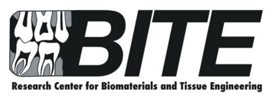Endodontic management of type I maxillary first molar with two palatal roots using cone-beam computed tomography
Downloads
Background: Understanding the anatomical variations in the root canal system is vital for the successful outcome of endodontic treatment. Anatomical variation with respect to palatal roots is rare compared with other roots of maxillary molars. Purpose: This case report describes a rare case of cone-beam computed tomography (CBCT)-guided endodontic treatment of a maxillary first molar with two palatal roots. Case: A 35-year-old Saudi woman complained of continuous pain in the right maxillary first molar. Past dental history revealed root canal treatment of the same tooth four weeks prior. Master cone radiographs recovered from her general dentist revealed a missing second palatal canal. Case Management: A CBCT image was taken to confirm if there were any aberrations in root canal morphology. Clinical exploration presented four distinct orifices: two palatal and two buccal. All the root canals were prepared and irrigated with 2.5% NaOCl and normal saline during instrumentation. All the canals were obturated with gutta-percha and AH 26 sealer using the continuous wave obturation technique. Conclusion: Clinical exploration of the pulpal floor, along with multiple angled radiographs, is needed to confirm any anatomic aberration.
Downloads
Mashyakhy M, Awawdeh M, Abu-Melha A, Alotaibi B, AlTuwaijri N, Alazzam N, Almutairi R, Alessa R. Anatomical evaluation of root and root canal configuration of permanent maxillary dentition in the population of the Kingdom of Saudi Arabia. Grassia V, editor. Biomed Res Int. 2022; 2022: 3428229. doi: https://doi.org/10.1155/2022/3428229
Akbar I. Radiographic study of the problems and failures of endodontic treatment. Int J Health Sci (Qassim). 2015; 9(2): 111–8. pubmed: https://pubmed.ncbi.nlm.nih.gov/26309429/
Christie WH, Peikoff MD, Fogel HM. Maxillary molars with two palatal roots: A retrospective clinical study. J Endod. 1991; 17(2): 80–4. doi: https://doi.org/10.1016/S0099-2399(06)81613-4
Baratto-Filho F, Fariniuk LF, Ferreira EL, Pecora JD, Cruz-Filho AM, Sousa-Neto MD. Clinical and macroscopic study of maxillary molars with two palatal roots. Int Endod J. 2002; 35(9): 796–801. doi: https://doi.org/10.1046/j.1365-2591.2002.00559.x
Liu J, Que K-H, Xiao Z-H, Wen W. Endodontic management of the maxillary first molars with two root canals: A case report and review of the literature. World J Clin Cases. 2019; 7(1): 79–88. doi: https://doi.org/10.12998/wjcc.v7.i1.79
Sriganesh A, Saravana Priyan G. Endodontic management of maxillary first molar with an anatomical variation of two palatal canals: A case report. Indian J Dent Res. 2019; 30(3): 478–80. doi: https://doi.org/10.4103/ijdr.IJDR_854_18
Wong J, Manoil D, Näsman P, Belibasakis GN, Neelakantan P. Microbiological aspects of root canal infections and disinfection strategies: An update review on the current knowledge and challenges. Front Oral Heal. 2021; 2: 672887. doi: https://doi.org/10.3389/froh.2021.672887
Lee S-J, Lee E-H, Park S-H, Cho K-M, Kim J-W. A cone-beam computed tomography study of the prevalence and location of the second mesiobuccal root canal in maxillary molars. Restor Dent Endod. 2020; 45(4): e46. doi: https://doi.org/10.5395/rde.2020.45.e46
Pan JYY, Parolia A, Chuah SR, Bhatia S, Mutalik S, Pau A. Root canal morphology of permanent teeth in a Malaysian subpopulation using cone-beam computed tomography. BMC Oral Health. 2019; 19(1): 14. doi: https://doi.org/10.1186/s12903-019-0710-z
Chen K, Ran X, Wang Y. Endodontic treatment of the maxillary first molar with palatal canal variations: A case report and review of literature. World J Clin Cases. 2022; 10(32): 12036–44. doi: https://doi.org/10.12998/wjcc.v10.i32.12036
Jadhav G. Endodontic management of a two rooted, three canaled mandibular canine with a fractured instrument. J Conserv Dent. 2014; 17(2): 192–5. doi: https://doi.org/10.4103/0972-0707.128046
Shah DY, Jadhav GR. Endodontic management of a maxillary molar with formation supradentalis: A case report. J Conserv Dent. 2014; 17(5): 481–2. doi: https://doi.org/10.4103/0972-0707.139848
Zubaidah N, Subiwahjudi A, Artini DD, Saninggar KE. Effectiveness of light-emitting diode exposure on photodynamic therapy against Enterococcus faecalis: in vitro study. Dent J. 2020; 53(2): 71–5. doi: https://doi.org/10.20473/j.djmkg.v53.i2.p71-75
Zakaria MN, Putri YS, Rahaju A, Fatmawati S, Cahyanto A. Inhibitory effect of calcium hydroxide combined with Nigella sativa against Enterococcus faecalis. Dent J. 2021; 54(4): 181–5. doi: https://doi.org/10.20473/j.djmkg.v54.i4.p181-185
Prasetyo EP, Juniarti DE, Sampoerno G, Wahjuningrum DA, Budi AT, Hasri D, Tjendronegoro E. The antibacterial efficacy of calcium hydroxide–iodophors and calcium hydroxide–barium sulfate root canal dressings on Enterococcus faecalis and Porphyromonas gingivalis in vitro. Dent J. 2022; 55(2): 62–6. doi: https://doi.org/10.20473/j.djmkg.v55.i2.p62-66
Copyright (c) 2024 Dental Journal

This work is licensed under a Creative Commons Attribution-ShareAlike 4.0 International License.
- Every manuscript submitted to must observe the policy and terms set by the Dental Journal (Majalah Kedokteran Gigi).
- Publication rights to manuscript content published by the Dental Journal (Majalah Kedokteran Gigi) is owned by the journal with the consent and approval of the author(s) concerned.
- Full texts of electronically published manuscripts can be accessed free of charge and used according to the license shown below.
- The Dental Journal (Majalah Kedokteran Gigi) is licensed under a Creative Commons Attribution-ShareAlike 4.0 International License
















